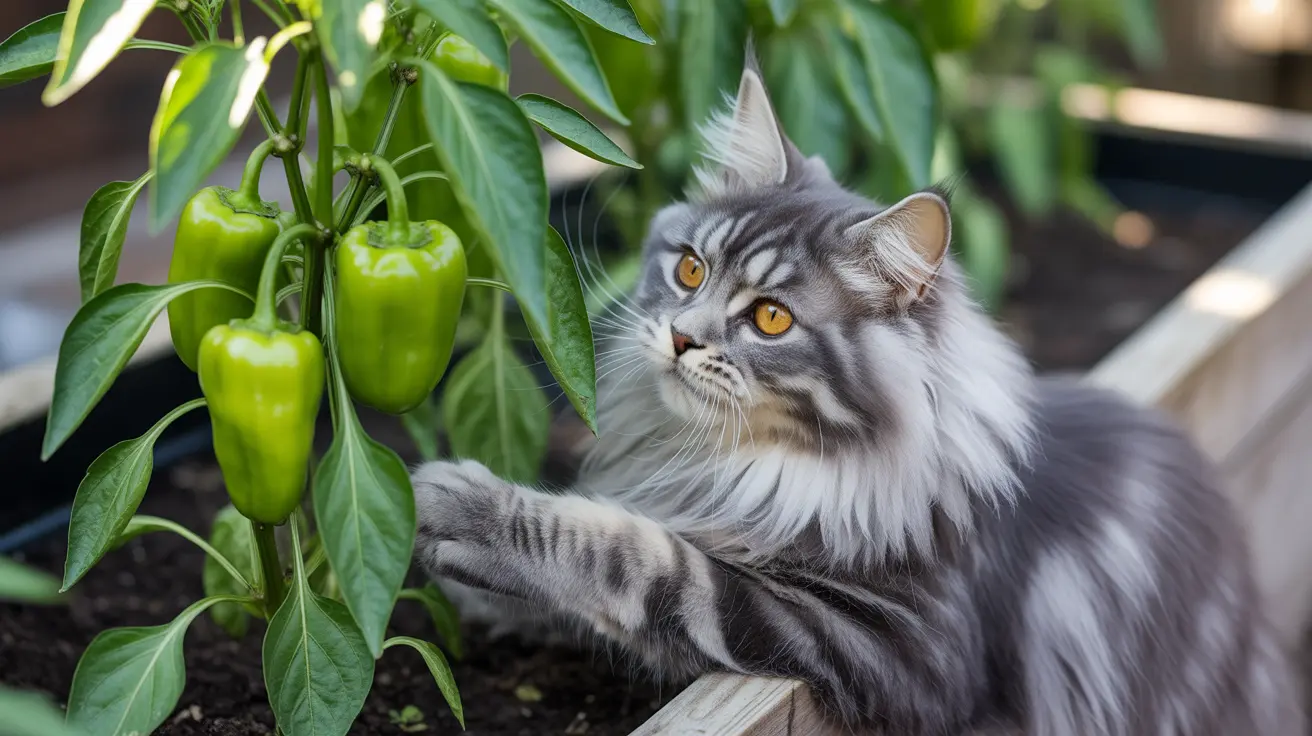Understanding Pepper Plant Toxicity in Cats
Different parts of pepper plants contain varying levels of toxic compounds. The main concerns are solanine, found primarily in leaves and stems, and capsaicin, present in hot pepper varieties. While bell pepper fruits are generally safe in small amounts, the green parts of any pepper plant can pose significant health risks to cats.
Types of Toxic Compounds
Solanine, a natural defense mechanism in pepper plants, can cause gastrointestinal distress and neurological symptoms in cats. Capsaicin, the compound responsible for spiciness in hot peppers, acts as an intense irritant that can cause immediate discomfort and inflammation in cats' sensitive tissues.
Recognizing Symptoms of Pepper Plant Poisoning
If your cat has encountered a pepper plant, watch for these common signs of toxicity:
- Excessive drooling
- Vomiting and diarrhea
- Oral irritation or ulcers
- Abdominal pain
- Lethargy
- Loss of appetite
- Difficulty breathing (in severe cases)
Emergency Response and Treatment
Quick action is crucial if you suspect your cat has ingested parts of a pepper plant. The severity of symptoms will determine the appropriate response:
For Mild Cases:
- Monitor your cat closely
- Provide fresh water
- Contact your veterinarian for guidance
For Severe Cases:
- Seek immediate veterinary care
- Bring a sample of the plant if possible
- Don't induce vomiting unless directed by a professional
Prevention and Safety Measures
Creating a cat-safe environment is essential for preventing pepper plant poisoning. Consider these protective strategies:
- Keep pepper plants in enclosed areas or hanging baskets
- Use physical barriers around garden spaces
- Consider growing cat-safe alternatives
- Remove fallen leaves promptly
- Train cats to avoid plant areas using positive reinforcement
Frequently Asked Questions
Are bell pepper fruits safe for cats to eat, or do they pose any toxicity risks?
Bell pepper fruits are generally safe for cats in small amounts. However, cats are carnivores and don't need peppers in their diet. The fruit itself contains minimal nutritional value for felines.
What symptoms should I watch for if my cat eats hot chili pepper plants or their leaves?
Watch for excessive drooling, vomiting, diarrhea, oral irritation, and signs of discomfort. More severe symptoms can include lethargy, difficulty breathing, and neurological signs like tremors.
How toxic are the stems and leaves of pepper plants compared to the fruit for cats?
Stems and leaves are generally more toxic than the fruit due to higher concentrations of solanine. While bell pepper fruit is relatively safe, the green parts of any pepper plant can cause significant health issues.
What immediate steps should I take if my cat ingests parts of a pepper plant?
Remove any remaining plant material from your cat's reach, rinse their mouth if possible, and contact your veterinarian immediately. Bring a sample of the plant for identification if you seek medical attention.
How can I prevent my cat from accessing toxic pepper plants in my garden or home?
Use physical barriers, keep plants in separate rooms or enclosed spaces, consider alternative cat-safe plants, and use deterrent sprays or materials around garden areas to discourage access.
Remember, prevention is always better than treatment. By understanding the risks associated with pepper plants and implementing proper safety measures, you can ensure your cat's environment remains safe and healthy.






